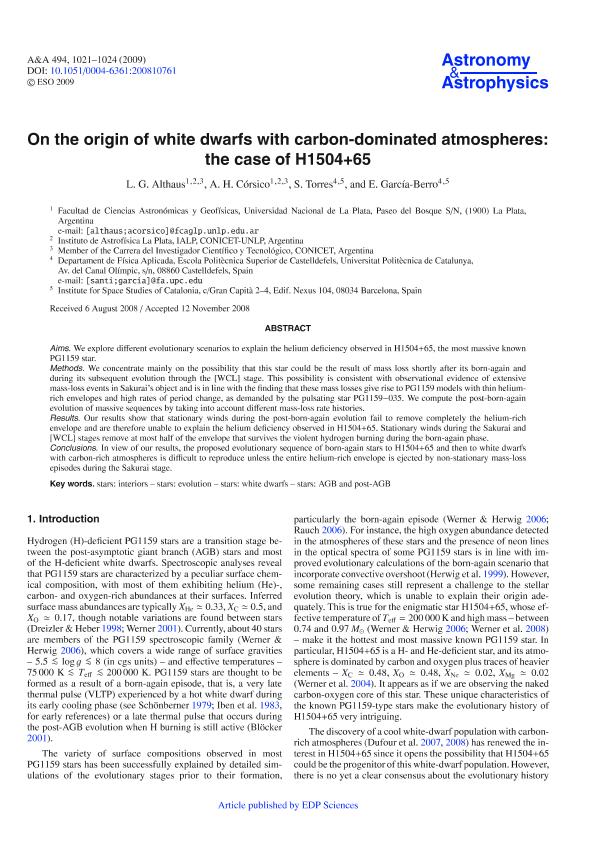Artículo
On the origin of white dwarfs with carbon-dominated atmospheres: the case of H1504+65
Fecha de publicación:
02/2009
Editorial:
EDP Sciences
Revista:
Astronomy and Astrophysics
ISSN:
0004-6361
Idioma:
Inglés
Tipo de recurso:
Artículo publicado
Clasificación temática:
Resumen
Using the most recent results about white dwarfs (WDs) in ten open clusters, we revisit semiempirical estimates of the initial–final mass relation (IFMR) in star clusters, with emphasis on the use of stellar evolution models. We discuss the influence of these models on each step of the derivation. One intention of our work is to use consistent sets of calculations both for the isochrones and the WD cooling tracks. The second one is to derive the range of systematic errors arising from stellar evolution theory. This is achieved by using different sources for the stellar models and by varying physical assumptions and input data. Aims. We explore different evolutionary scenarios to explain the helium deficiency observed in H1504+65, the most massive known PG1159 star. Methods. We concentrate mainly on the possibility that this star could be the result of mass loss shortly after its born-again and during its subsequent evolution through the [WCL] stage. This possibility is consistent with observational evidence of extensive mass-loss events in Sakurai’s object and is in line with the finding that these mass losses give rise to PG1159 models with thin heliumrich envelopes and high rates of period change, as demanded by the pulsating star PG1159−035. We compute the post-born-again evolution of massive sequences by taking into account different mass-loss rate histories. Results. Our results show that stationary winds during the post-born-again evolution fail to remove completely the helium-rich envelope and are therefore unable to explain the helium deficiency observed in H1504+65. Stationary winds during the Sakurai and [WCL] stages remove at most half of the envelope that survives the violent hydrogen burning during the born-again phase. Conclusions. In view of our results, the proposed evolutionary sequence of born-again stars to H1504+65 and then to white dwarfs with carbon-rich atmospheres is difficult to reproduce unless the entire helium-rich envelope is ejected by non-stationary mass-loss episodes during the Sakurai stage.
Palabras clave:
Interior Stars
,
Evolution of Stars
,
White Dwarfs
,
Post Agb Stars
,
Agb Stars
Archivos asociados
Licencia
Identificadores
Colecciones
Articulos(IALP)
Articulos de INST.DE ASTROFISICA LA PLATA
Articulos de INST.DE ASTROFISICA LA PLATA
Citación
Althaus, Leandro Gabriel; Corsico, Alejandro Hugo; Torres, S.; García Berro, Enrique; On the origin of white dwarfs with carbon-dominated atmospheres: the case of H1504+65; EDP Sciences; Astronomy and Astrophysics; 494; 3; 2-2009; 1021-1024
Compartir
Altmétricas




